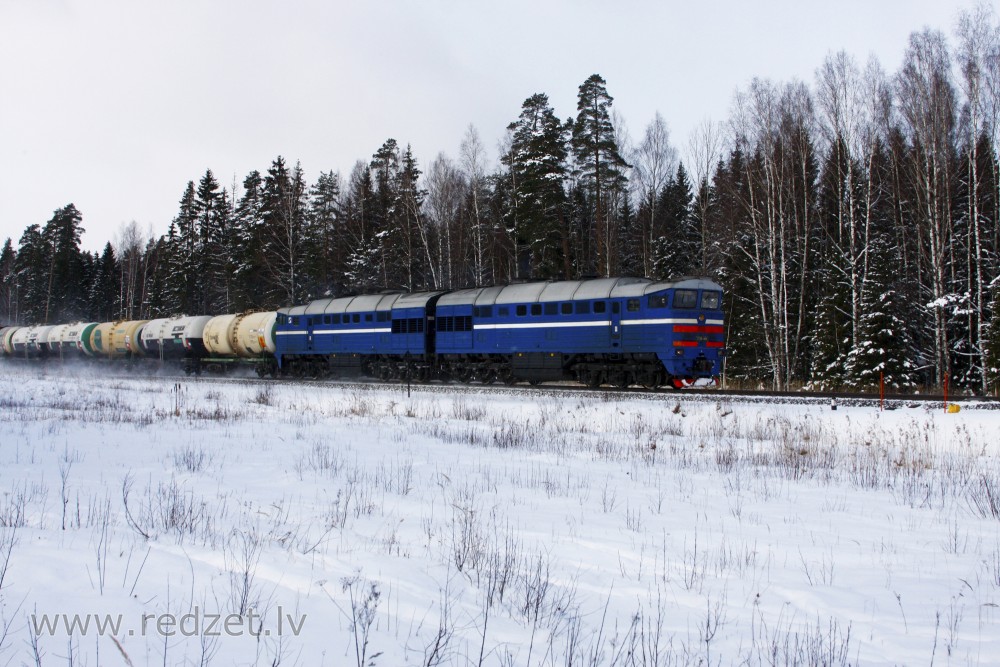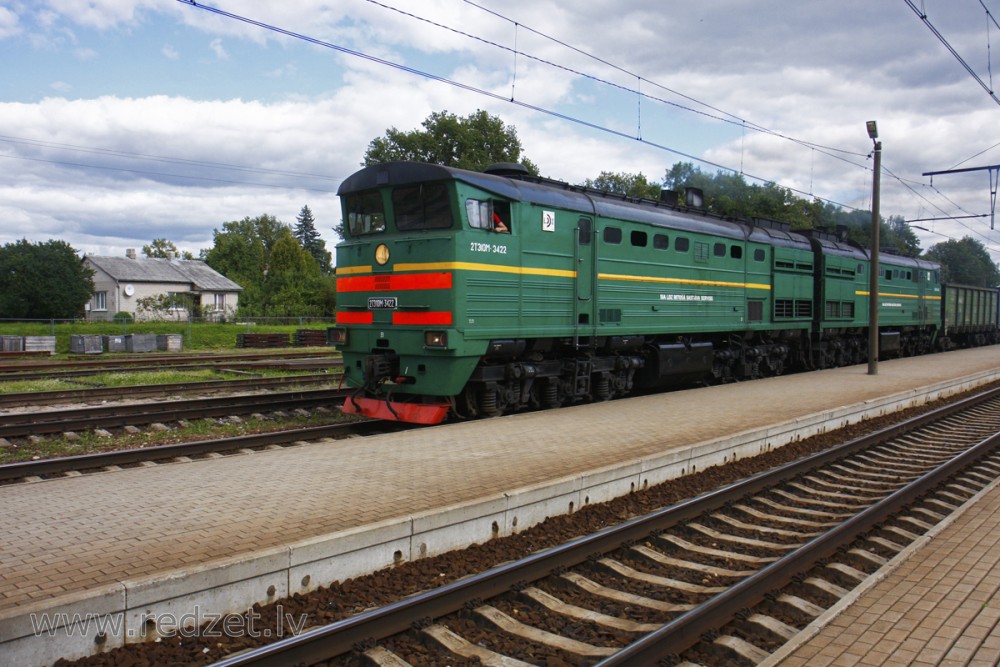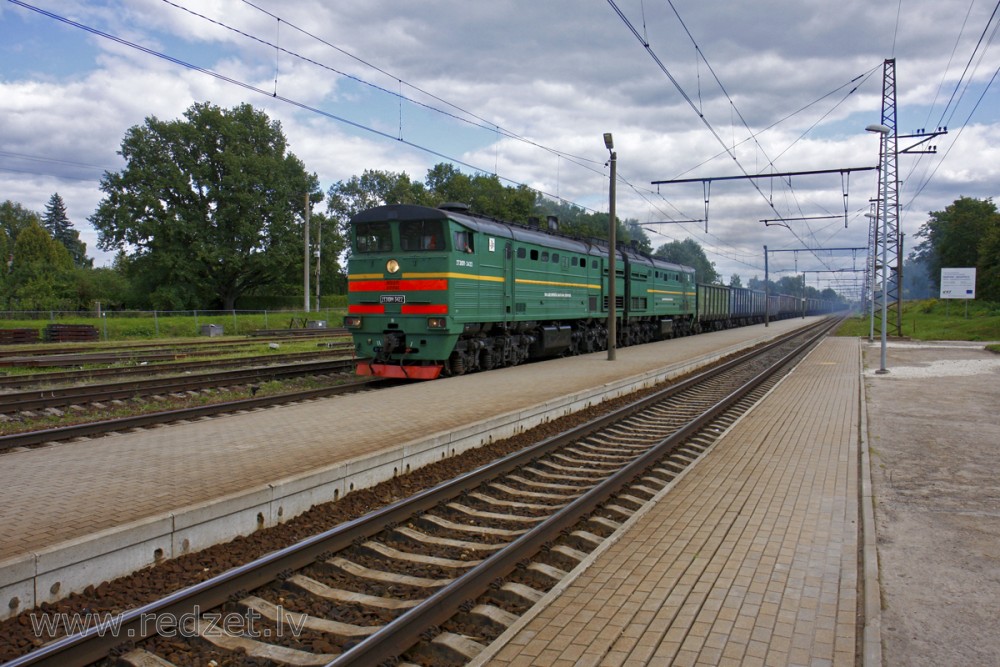Locomotive
A locomotive or engine is a rail transport vehicle that provides the motive power for a train. If a locomotive is capable of carrying a payload, it is usually rather referred to as multiple units, motor coaches, railcars or power cars; the use of these self-propelled vehicles is increasingly common for passenger trains, but rare for freight.
Traditionally, locomotives pulled trains from the front. However, push-pull operation has become common, where the train may have a locomotive (or locomotives) at the front, at the rear, or at each end.
Etymology
The word locomotive originates from the Latin loco – "from a place", ablative of locus "place", and the Medieval Latin motivus, "causing motion", and is a shortened form of the term locomotive engine, which was first used in 1814 to distinguish between self-propelled and stationary steam engines.
Classifications
Prior to locomotives, the motive force for railways had been generated by various lower-technology methods such as human power, horse power, gravity or stationary engines that drove cable systems. Few such systems are still in existence today. Locomotives may generate their power from fuel (wood, coal, petroleum or natural gas), or they may take power from an outside source of electricity. It is common to classify locomotives by their source of energy. The common ones include:
Steam
A steam locomotive is a locomotive whose primary power source is a steam engine. The most common form of steam locomotive also contains a boiler to generate the steam used by the engine. The water in the boiler is heated by burning combustible material – usually coal, wood, or oil – to produce steam. The steam moves reciprocating pistons which are connected to the locomotive's main wheels, known as the "drivers". Both fuel and water supplies are carried with the locomotive, either on the locomotive itself or in wagons called "tenders" pulled behind.
The first full-scale working railway steam locomotive was built by Richard Trevithick in 1802. It was constructed for the Coalbrookdale ironworks in Shropshire in the United Kingdom though no record of it working there has survived. On 21 February 1804, the first recorded steam-hauled railway journey took place as another of Trevithick's locomotives hauled a train from the Pen-y-darren ironworks, in Merthyr Tydfil, to Abercynon in South Wales. Accompanied by Andrew Vivian, it ran with mixed success. The design incorporated a number of important innovations including the use of high-pressure steam which reduced the weight of the engine and increased its efficiency.
Internal combustion
Internal combustion locomotives use an internal combustion engine, connected to the driving wheels by a transmission. Typically they keep the engine running at a near-constant speed whether the locomotive is stationary or moving.
Kerosene
Kerosene locomotives use kerosene as the fuel. They were the world's first oil locomotives, preceding diesel and other oil locomotives by some years.
A kerosene locomotive was built in 1894 by the Priestman Brothers of Kingston upon Hull for use on Hull docks.
Petrol
Petrol locomotives use petrol as their fuel.
Most petrol locomotives built were petrol-mechanical, using a mechanical transmission to deliver the power output of the engine to the driving wheels. The first commercially successful petrol locomotive was a petrol-mechanical built by the Maudslay Motor Company in 1902, for the Deptford Cattle Market in London.
Diesel
Diesel locomotives use diesel as their fuel. In the early days of diesel propulsion development, various transmission systems were employed with varying degrees of success, with electric transmission proving to be the most popular.
Diesel-mechanical
A diesel–mechanical locomotive uses a mechanical transmission to transfer power to the wheels. This type of transmission is generally limited to low-powered, low speed shunting (switching) locomotives, lightweight multiple units and self-propelled railcars. The earliest diesel locomotives were diesel-mechanical.
In 1906, Rudolf Diesel, Adolf Klose and the steam and diesel engine manufacturer Gebrüder Sulzer founded Diesel-Sulzer-Klose GmbH to manufacture diesel-powered locomotives. The Prussian State Railways ordered a diesel locomotive from the company in 1909. The world's first diesel-powered locomotive (a diesel-mechanical locomotive) was operated in the summer of 1912 on the Winterthur–Romanshorn railway in Switzerland, but was not a commercial success.
Diesel-electric
In a diesel–electric locomotive, the diesel engine drives either an electrical DC generator (generally, less than 3,000 horsepower (2,200 kW) net for traction), or an electrical AC alternator-rectifier (generally 3,000 horsepower (2,200 kW) net or more for traction), the output of which provides power to the traction motors that drive the locomotive. There is no mechanical connection between the diesel engine and the wheels. The vast majority of diesel locomotives today are diesel-electric.
Diesel-hydraulic
Diesel–hydraulic locomotives use one or more torque converters, in combination with gears, with a mechanical final drive to convey the power from the diesel engine to the wheels.
The main worldwide user of main-line hydraulic transmissions was the Federal Republic of Germany, with designs including the 1950s DB class V 200, and the 1960 and 1970s DB Class V 160 family. British Rail introduced a number of diesel hydraulic designs during it 1955 Modernisation Plan, initially license built versions of German designs. In Spain RENFE used high power to weight ratio twin engined German designs to haul high speed trains from the 1960s to 1990s.
Gas turbine
A gas turbine locomotive is an internal combustion engine locomotive consisting of a gas turbine. ICE engines require a transmission to power the wheels. The engine must be allowed to continue to run when the locomotive is stopped.
Electric
An electric locomotive is a locomotive powered only by electricity. Electricity is supplied to moving trains with a (nearly) continuous conductor running along the track that usually takes one of three forms: an overhead line, suspended from poles or towers along the track or from structure or tunnel ceilings; a third rail mounted at track level; or an onboard battery. Both overhead wire and third-rail systems usually use the running rails as the return conductor but some systems use a separate fourth rail for this purpose. The type of electrical power used is either direct current (DC) or alternating current (AC).


